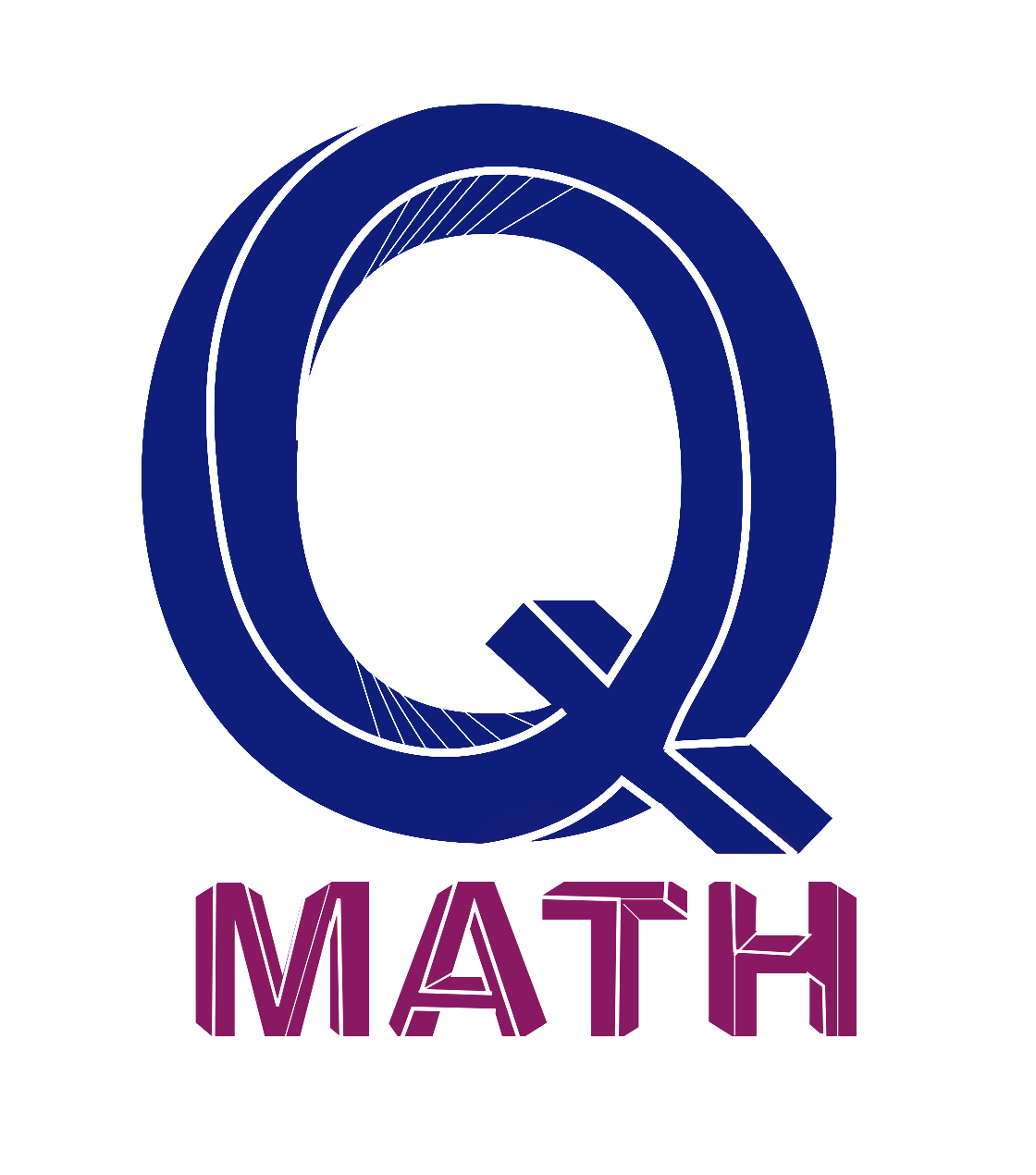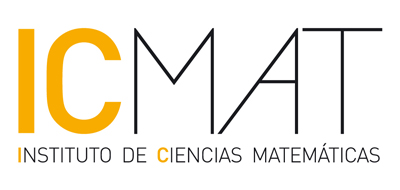Q-Math Seminar

John Stewart Fabila Carrasco. (UC3M)
The discrete magnetic Laplacian: geometric and spectral preorders with applications
Wednesday the 10th of June, 2020, 11:00, Online Seminar
Important, this seminar will be held online. To access the online stream use the link below. Discrete geometric analysis is a hybrid field of several areas of mathematics including graph theory, combinatorics, geometry, theory of discrete groups, and probability. A central object in this field is the spectrum of the discrete magnetic Laplacians (a discrete analogue of magnetic Laplacians on manifolds) acting on weighted graphs and has applications in mathematics, physics and technology. The magnetic potential $\alpha$ acting on a weighted graph $(G,w)$ allows studying several families of Laplacians at the same time (combinatorial, standard, normalised, signless, magnetic Laplacian, and more). We introduce a geometric and a spectral preorder relation on the class of weighted graphs with a magnetic potential [3]. Some applications of these preorders are the following: 1. We found a simple geometric condition that guarantees the existence of spectral gaps of the discrete Laplacian on periodic graphs. For proving this, we analyse the discrete magnetic Laplacian on the finite quotient and interpret the vector potential as a Floquet parameter [1, 2]. 2. We present a new geometrical construction leading to an infinite collection of families of graphs, where all the elements in each family are (finite) isospectral (weighted) graphs for the magnetic Laplacian. The parametrisation of the isospectral graphs in each family is given by a number theoretic notion: the different partitions of a natural number [4]. We conclude this talk with other applications (the Cheeger constant, minor graphs, etc.) and some open questions. References: [1] J.S. Fabila-Carrasco and F. Lledó, Covering graphs, magnetic spectral gaps and applica- tions to polymers and nanoribbons, Symmetry. 11 (2019), 1163. [2] J.S. Fabila-Carrasco, F. Lledó, and O. Post, Spectral gaps and discrete magnetic Lapla- cians, Linear Algebra Appl. 547 (2018), 183–216. [3] J.S. Fabila-Carrasco, F. Lledó, and O. Post, Spectral preorder and perturbation of discrete weighted graphs, available at https://arxiv.org/abs/2005.08080. [4] J.S. Fabila Carrasco, F. Lledó and O. Post, Isospectral magnetic graphs, preprint 2020.
Davide Lonigro (Università degli studi di Bari, Italy)
The Friedrichs-Lee Hamiltonian: singular coupling, renormalization, and spectral properties
Wednesday the 1st of April, 2020, 12:00, Online Seminar
Important, this seminar will be held online. To access the online stream use the link below.
In this talk we will provide an overview on the properties of the Friedrichs-Lee Hamiltonian. After showing that the model can describe the single-excitation interaction between a structured boson field and a family of two-level systems, we will discuss its extension to a larger class of couplings via a domain change; this procedure can be interpreted as an operator-theoretical renormalization. We will finally characterize its spectral properties by studying its spectral decomposition; in particular, we will briefly discuss the insurgence of bound states in the continuum (BICs) for a Friedrichs-Lee model whose inner Hamiltonian has an absolutely continuous spectrum.
Video Recording
Antonio García (UC3M)
A link between discrete convolution systems and sampling via frame theory
Wednesday the 4th of March, 2020, 12:00, UC3M, Seminar Room 2.2D08
In this talk a regular sampling theory for a multiply generated unitary invariant subspace of a separable Hilbert space H is proposed. This subspace is associated to a unitary representation of a countable discrete abelian group G on H. The samples are defined by means of a filtering process which generalizes the usual sampling settings.
Diego Martínez (UC3M & ICMAT)
Quasi-diagonality and finite-dimensional approximations
Wednesday the 19th of February, 2020, 12:00, UC3M, Seminar Room 2.2D08
Finite-dimensional approximations of (normally of infinite nature) objects is ubiquitous in mathematics. In this talk we will introduce the so-called quasi-diagonal operators. That is, given an infinite-dimensional Hilbert space H, we say that an operator on H is quasi-diagonal if some of its corners behave approximately the same as the operator itself. Although informal so far, this notion has several applications in vastly different areas, such as numeric analysis, group theory or K-theory. We shall name a few of these, highlighting some key constructions. We will end the talk introducing Berg's technique, and how it can be generalized to residually finite groups.
Giuseppe Marmo (UC3M, Excellence Chair)
Heisenber-Weyl algebra, contact structures and dissipation
Wednesday the 5th of February, 2020, 12:00, UC3M, Seminar Room 2.2D08
The HW algebra defines a short exact sequence of Lie algebras,to allow for nonlinear transformations ,it will be 'made' into a Lie-module. The dual picture of this module defines a contact structure. A contact structure will also appear when we consider a finite-level quantum system and take into account the Berry phase. Contact manifolds turn out to be the appropriate setting to describe some dissipative systems.
Florio M. Ciaglia (Max-Planck-Institut, Leipzig)
From the Jordan product to Riemannian geometries
Friday the 13th of December, 2019, 13:00, ICMAT, Aula Gris I
The Jordan product on the self-adjoint part of a finite-dimensional C*-algebra A is shown to give rise to Riemannian metric tensors on suitable manifolds of states on the algebra. In particular, this construction allows to look at the Fisher-Rao metric tensor on probability distributions, at the Fubini-Study metric tensor on pure quantum states, and at the Helstrom metric tensors on faithful quantum states as different instances of the ''same conceptual entity''. If time allows, an alternative derivation of these Riemannian metric tensors in terms of the GNS construction will be presented.
José Polo (UCM)
Groupoids and inverse semigroups
Monday the 2nd of December, 2019, 15:30, UC3M, Seminar Room 2.2D08
We aim to introduce briefly the concepts of groupoid and inverse semigroup, motivating and showing the relation between them by means of some examples. We will then turn to the construction of groupoid representations as well as their associated C*-algebras, illustrating the construction with a class of examples that includes Cuntz-Krieger algebras.
Olaf Post (Universität Trier)
Spectral gaps, discrete magnetic Laplacians and spectral ordering
Friday the 15th of November, 2019, 12:30, ICMAT, Aula Gris 1
In this talk, we localise the spectrum of a discrete magnetic Laplacian on a finite graph using techniques similar to the Dirichlet-Neumann-bracketing for continuous problems. As application we localise the spectrum of periodic Laplacians using the fact that the fibre operators from Floquet Bloch theory can be seen as magnetic Laplacians. Finally, we use the bracketing ideas to order spectra of different graphs, and show how certain graph manipulations change the spectrum.
David Krejcirik (Czech Technical University, Prague)
Spectral geometry of quantum waveguides
Friday the 13th of September, 2019, 15:00, ICMAT, Aula Naranja
We shall make an overview of the interplay between the geometry of tubular neighbourhoods of Riemannian manifold and the spectrum of the associated Dirichlet Laplacian. An emphasis will be put on the existence of curvature-induced eigenvalues in bent tubes and Hardy-type inequalities in twisted tubes of non-circular cross-section. Consequences of the results for physical systems modelled by the Schroedinger or heat equations will be discussed.

